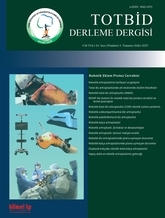
Patellofemoral osteoarthritis (PFOA) is a degenerative joint disease that causes anterior knee pain and loss of function. While PFOA often occurs alongside involvement of other knee compartments, it can present as isolated PFOA in 8.3% to 11.7% of the general population. When conservative treatments fail, surgical intervention may be necessary. Although total knee arthroplasty (TKA) is a common option for isolated PFOA, it has disadvantages, especially in young and active patients, regarding the preservation of healthy knee kinematics. Therefore, patellofemoral arthroplasty (PFA), a less invasive surface replacement surgery, is often preferred. The primary goal of PFA is to reduce pain, improve range of motion, and enhance patients` quality of life. However, several factors have prevented PFA from gaining widespread acceptance since its early applications, including patient selection, surgeon experience, implant characteristics, and accurate placement technique. High revision rates reported in the literature have been linked to implant designs, surgical difficulties, and inadequate restoration of the patellofemoral joint. To address these issues, robot-assisted PFA techniques have emerged. Robotic systems enable precise preoperative planning and highly accurate execution of that plan, offering the potential for more accurate implant placement and better restoration of PF kinematics. Robot-assisted PFA is considered a promising method with the potential to deliver better outcomes compared to the historically high failure rates of conventional PFA. However, further research is needed to evaluate its long-term results and advantages over conventional PFA. The cost and accessibility of robotic systems are also important factors to consider.